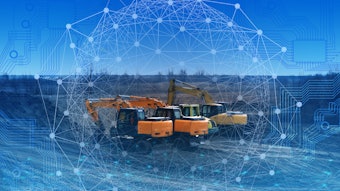
In the realm of construction, a traditionally conservative industry, the journey toward innovation is often met with challenges and at times resistance. Many CEOs and C-suite leaders may be asking themselves or their teams, “What are we doing in 2024 to begin to invest and harness the power of AI tools in our business? Because if we wait, it might be too late!”
In this article, we explore tactical measures that construction businesses–both suppliers and construction companies of any size–can deploy to initiate their artificial intelligence (AI) journey, recognizing that many may not yet have all they need in place including a robust data strategy to get started.
Tactical Talent Management: Bridging the Knowledge Gap
The first step in AI adoption is cultivating a workforce that is ready for change. (Yes, we are talking about culture now). Look to initiate tailored training and employee engagement programs that cater to different learning preferences within your multigenerational workforce. This step not only bridges the knowledge gap but also instills confidence in employees by showcasing AI as an enhancement to their skills and productivity rather than a threat to job security. Encourage mentorship programs to facilitate knowledge sharing between experienced and newer employees. The younger generation will most likely adopt and adapt more quickly with AI, so the knowledge sharing moves in multiple directions (not just top down).
Diversity & Inclusion: AI for Unbiased Recruitment
Talent gaps continue to be a challenge and attracting people with the right skills is critical. While accomplishing this, promoting diversity, equity and inclusion (DEI) with AI doesn't require an extensive data infrastructure. Use AI tools for unbiased recruitment processes, mitigating biases in hiring decisions. This tactical approach aligns with ethical standards and enhances DEI without necessitating a fully developed data strategy. AI tools can be deployed to support learning and career development programs as well. We want to keep the good talent we hire and see them take on more responsibilities to contribute to the overall success of the organization.
Foundations of Electrification: Implementing Predictive Maintenance
For businesses considering the electrification of their equipment, the initial focus could be on predictive maintenance. Introduce AI-powered tools that analyze equipment data to predict maintenance needs, especially with batteries and powering stations as new assets are added to their fleets. This not only extends the lifespan of the machinery but also minimizes downtime, making the transition to electric fleets smoother. Such a tactical step ensures a sustainable approach to equipment management without overwhelming the organization with a full-scale electrification strategy.
Practical Risk Management: Harnessing Predictive Analytics
Implementing AI in risk management doesn't require an extensive data strategy from the outset. Start with predictive analytics to foresee potential project delays. By analyzing historical project data, AI can identify patterns and trends, offering early insight into potential risks. This tactical approach allows construction businesses to build a more risk-aware culture without needing a complex data infrastructure.
Supply Chain Optimization: Streamlining Procurement with AI Insights
AI can play a pivotal role in optimizing supply chain processes even without a fully developed data strategy. Implement AI to analyze existing supply chain and/or inventory data, providing insights to streamline procurement processes and restructure inventory levels to better address slow moving items. This tactical step ensures efficient material sourcing, minimizes disruptions and delivers cash along the way as it sets the stage for more comprehensive data strategies as the supply chain organization progresses in its AI adoption journey.
Collaboration Tools for Project Management: Enhancing Communication
At the tactical level, implementing AI doesn't have to be an overwhelming process for the workforce in the field or office. Introduce AI-enhanced collaboration tools for project management. These tools facilitate communication, task tracking and collaboration among project stakeholders. By enhancing communication channels, businesses can foster a collaborative environment that lays the groundwork for more sophisticated AI applications in the future whether in the manufacturing facility or field.
Strategic Vision in Early AI Adoption
In the early stages of AI adoption, the emphasis should be on one or two tactical measures that align with the organization's strategic vision yet address a significant challenge or pain point where a focused response can be deployed that delivers improvements easy to measure in the operation and financial metrics. While a comprehensive data strategy is essential for long-term success, any of these tactical steps pave the way for gradual integration and allows the organizational culture to begin to adopt a new way of thinking and operating in the business. By focusing on one or two critical areas such as talent management, electrification of equipment with predictive maintenance, risk analytics or supply chain optimization, construction businesses can embark on their AI journey with tangible, immediate benefits in 2024 and also give the culture time to adopt and embrace the tools and adapt and learn over time.
In conclusion, the key to successful AI adoption lies in taking practical, tactical steps that align with the organization's strategic vision. By implementing AI in areas that don't require extensive data infrastructure, businesses can lay the foundation for a more innovative and resilient future. Early adoption is about building momentum, and any of these tactical measures pave the way for broader, strategic AI integration in the evolving construction landscape.
























